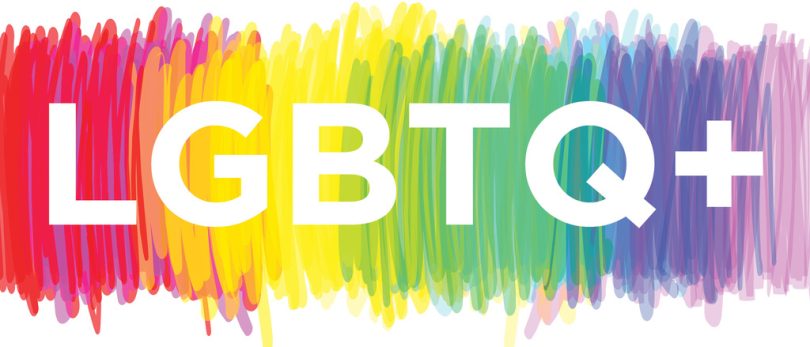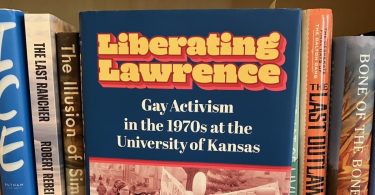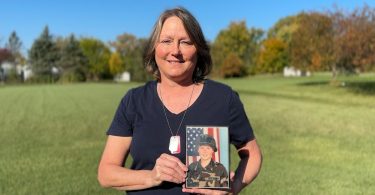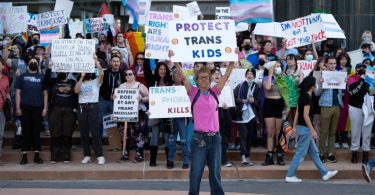A breakdown of new survey data.
·
Thursday, December 28, 2023
·
9 comments
I was amused by The Hill‘s report “These states have the most LGBTQ residents: research.”
California has the largest number of LGBTQ Americans, according to new research, while Washington, D.C., has the greatest percentage of LGBTQ residents and the South claims a larger share of LGBTQ adults than any other region.
A report published by the Williams Institute[*] at the University of California, Los Angeles found an estimated 5.5 percent of U.S. adults, or about 13.9 million people, identify as LGBTQ, based on data from the Centers for Disease Control and Prevention from 2021-22.
About 14.3 percent of D.C.’s population identifies as LGBTQ, while Oregon and Delaware, coming in at second and third, have LGBTQ populations of 7.8 and 7.5 percent, respectively,
Vermont and New Hampshire are close behind — 7.4 and 7.2 percent, respectively, followed by Washington state at 6.9 percent and Colorado and Maine, where LGBTQ residents accounted for 6.8 percent of each state’s population.
California, the largest state by population, has the most LGBTQ residents — 1,549,600 — followed by Texas’s 1,071,300 and Florida’s 898,000. New York is close behind with 853,600 residents before the number drops to 586,500 in Pennsylvania, followed by 557,600 in Ohio. The top 10 is rounded out by Michigan, Illinois, Georgia and Washington.
Nearly 36 percent of LGBTQ Americans live in the South, which researchers defined as stretching from Texas and Oklahoma to Florida and north through Delaware. Kentucky, West Virginia, and D.C. are also included, per USA Today.
The Midwest holds 21.1 percent of LGBTQ Americans, while the Northeast has 18.5 percent.
The report separately found young adults — ages 18 to 24 — take up the largest share of LGBTQ Americans, at 15.2 percent. That’s equal to nearly 1 in 6 young adults in the U.S., or about 4,659,600 people.
I was immediately reminded of this:
Indeed, the top 5 most-LGBT** states and the top 5 states by population coincide exactly. The next five are ranked 7, 10, 6, 8, and 13 by population—but they’re much more closely clustered than the top five, both in terms of population and the number of LGBT adults counted.
The percentage figures are more interesting but would be much more so with some multivariate analysis. Mostly obviously, how does the percentage of LGBT-identifying individuals correlate with the age demographics of the state? Ditto the urban-rural demographics?
As highlighted in The Hill’s coverage, the age differences really jump out:
So, for example, DC is far and away the most-LGBT “state.” But of course it is: it’s a very small city. Further, it’s considerably younger than the US population as a whole.
Otherwise, the distribution differences aren’t all that stark:
Among the 50 states, we see a low of 4.1% in Mississippi and a high of 7.8% in Oregon. I suspect that most of that variation goes away when accounting for demographics.
And some of it is no doubt simply a function of the survey methodology itself:
The Behavioral Risk Factor Surveillance System (BRFSS) is a state-based system of health surveyscoordinated by the Centers for Disease Control and Prevention and conducted in partnership withstates, the District of Colombia, and three U.S. territories.3 Every year an anonymous, self-reportsurvey is conducted by telephone with representative samples of non-institutionalized adults who livein each state.
[…]
Sexual orientation is measured with one question, “Which of the following best represents howyou think of yourself?” with response options, “Gay or lesbian; Straight, that is, not gay; Bisexual;Something else; I don’t know the answer” or respondents could refuse to answer. To assesstransgender and cisgender status, the BRFSS module asks, “Do you consider yourself to betransgender?” with response options, “Yes; No; Don’t Know/not sure” or respondents could refuse toanswer. If a respondent expresses confusion, then interviewers provide definitions of transgenderand gender nonconforming. If respondents affirmatively answer the question, they are then asked ifthey consider themselves to be male-to-female; female-to-male; or gender nonconforming.
In order to produce stable estimates of LGBT prevalence, we pool the data from the 2020 and 2021BRFSS surveys; 37 states, and Guam used the SOGI module once or twice in this timeframe (n =484,477). Twenty-nine states used the SOGI module in 2020 and 2021 and eight states used themodule in only one year. All respondents who were asked their sexual orientation identity werecoded as one if they identify as LGB and zero if they did not, which includes not sure, don’t know, andrefusal responses. All respondents who were asked whether they identify as transgender are codedas one if they did or zero if they did not, which includes don’t know responses, not sure responses,and refusals to answer. A respondent who was LGB and/or transgender was classified as LGBT (1), allothers were classified as not LGBT (0).
We directly analyze and present the results from any state that implemented the SOGI module in2020, 2021 or both years. More specifically, our prevalence estimates of the LGBT population forthe 37 states that used the BRFSS SOGI module in one or both years are the same as the weightedstatistic one would obtain from direct analyses of BRFSS data for those years.4For states and the District of Columbia (DC) where the SOGI module was not used in either 2020 or2021 and therefore no estimates of the LGBT population can be calculated directly—we use smallarea estimation strategies common in demographic research with poststratification techniquescommon in survey research.
One imagines that there’s a higher likelihood of LGBT individuals claiming to be straight or simply refusing to answer the question to a stranger calling on the telephone would be higher in the South and other more conservative parts of the country. And some states don’t administer the question at all, forcing the researchers to rely on estimation techniques. That’s a perfectly valid research technique but makes comparing relatively small differences fraught.
Because the questions relied on here are binary, it’s hard to know what to make of the results. There are the obvious demographic differences between the states already addressed. But one would certainly imagine that young LGBT adults would be inclined to move to places where they feel more comfortable living openly. Since there is no questioning along those lines, though, the report provides no insights on the why behind the observed differences.
_______________
*It’s worth noting that the Williams Institute, housed at UCLA’s School of Law, is “dedicated to conducting rigorous, independent research on sexual orientation and gender identity law and public policy” and “disseminates its research to policymakers, judges, the media, and other stakeholders to ensure that decisions impacting the lives of millions of LGBT people and families are based on data and facts.” Its founding “goal was to replace the pervasive bias against LGBT people in law, policy, and culture with independent research on LGBT issues.”
**For whatever reason, the research team consistently used “LGBT” rather than “LGBTQ” or other variants. I follow their model, since it’s quite possible that the addition of Q and other options would have at least slightly changed their findings.







